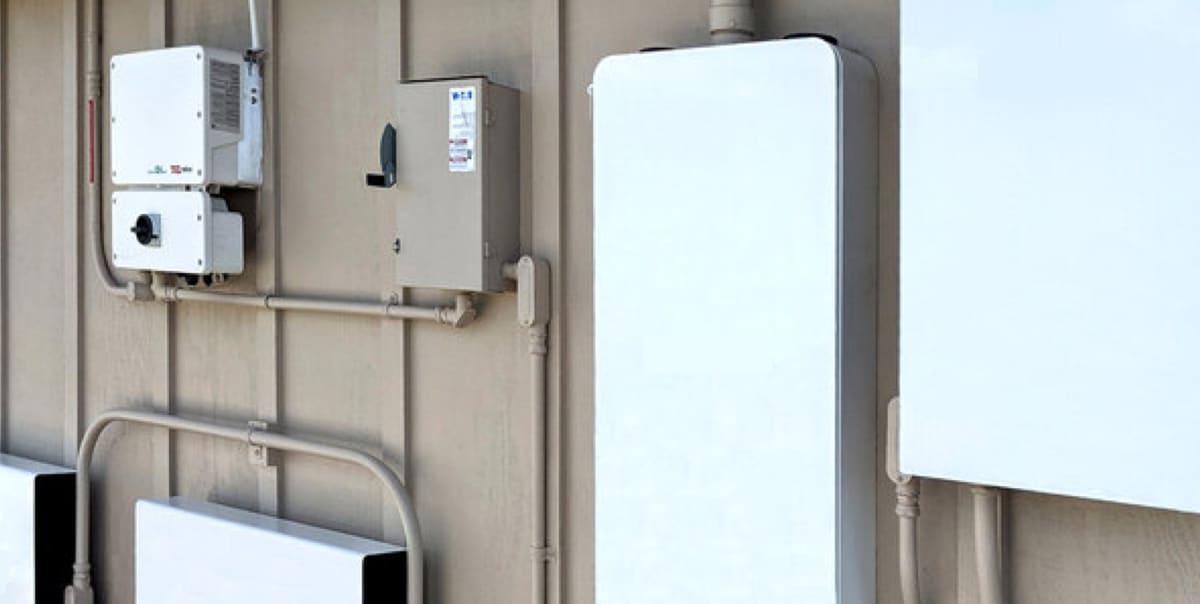Smart Panel Recommendations for 2022

5 Min. Read
A smart electrical panel is something that many homeowners on their path toward electrification opt in to install. If you have already invested or are planning to invest in technology like solar panels and battery storage, it makes even more sense to get the best value on your investment, and that is where a smart panel can come in. These recommendations will help you get the most out of this device.
Emphasize functionality over cost
Technology in this field is constantly improving. Newer technology offers more valuable features.
Some examples are:
- Whole home surge protection
- Reporting capabilities.
- Advanced circuit load management capabilities.
You may be able to save upfront costs by buying older technology, but you may sacrifice functional value. So, be sure to investigate what’s available before you buy.
Size the panel with the future in mind
As smart technology advances so will its applications. As a result, your home will need to accommodate more devices over time. Your loads will grow, and so will the demands on your panel.
Generally, the minimum acceptable size panel is 100 amps. But if you are planning for extensive electrification of your home with more electric appliances, HVAC and electric vehicle (EV) charging, you will need a 200-amp panel at a minimum. Do not under-plan capacity. Retrofits are expensive and disruptive.
Look for device connectivity
One of the newer smart panel features is connectivity, which allows you to switch between different power sources to optimize energy costs. For instance, if you have solar panels and battery storage, you can program your smart electrical panel to run off the battery when utility costs are at their highest. At the same time, smart technology in the panel allows you to monitor the power consumption of your connected devices. You can access and adjust settings in real time by using a smartphone.
For EV charger owners, newer bidirectional EV charging capability combines with panel technology to allow you to use the EV charger’s battery to power your house or return the power to the grid.
EV chargers convert utilities’ alternating current (AC) into direct current (DC) usable by the EV. If the EV is fully charged and sitting idle, a bidirectional charger will convert to AC and the smart panel will allow the power to be returned to the home or to the grid. Cost savings result from the return.
The technology is relatively new, but it’s wise to consider it now.
Plan out your circuit distribution
One of the key features of smart electrical panels is that they allow you to manage and monitor circuits individually. Panels usually come with 30 or so circuit breakers, so it’s smart to plan your load ahead of time.
Setting up your battery backup is especially crucial. You’ll need to prioritize which circuits take priority for backup to avoid overloading your battery capacity. That capacity is typically limited by amps and time. A typical circuit prioritization might be:
- Wi-fi and computers.
- Selected lighting.
- Refrigerator and stove.
- Heating systems
- Air conditioning systems
Know your equipment
Like any other technology, these panels are worthless if you do not know how to use them.
Start with a basic understanding, but don’t stop there. For example, practice with the panel to get familiar with it and maximize its value. What’s more, don’t forget to master all of the devices on your system, not just the smart panel.
A vast amount of data will be newly available to you now. Master the energy dashboard and reporting capabilities and learn how to use the data to optimize your power system. In addition, you should be able to track energy performance over time and make improvements.
As discussed previously, the ability to manage individual circuits in real time can be tremendously valuable. Therefore, it pays to master this feature.
With the right combination of technologies and the skill to use them, you will essentially be able to have your own microgrid.
You will need a licensed electrical contractor to install the panel and other devices, so make sure to include a provision in your contract for the contractor to provide hands-on training on your system components. You really can’t manage the system unless you know how the pieces work together.
Get qualified help
Unless you have experience in solar, smart electrical panels, battery systems and high voltage installations, this is not a DYI project. You will need a trusted, experienced contractor to ensure success. Mistakes, poor workmanship and delays will make for a poor experience and added costs. In addition, high voltage work is inherently dangerous. Don’t risk it if you are not qualified.
Ideally, you should involve the contractor from the beginning when planning for and selecting the components. Their help in sizing your system to your current and future requirements is essential and will save you time and money. You can avoid the usual newcomer mistakes and costs by involving a trusted contractor early.
Look for a contractor with proven experience in electrification, solar, batteries and smart technology.
Leverage innovative technology
The quest for green homes does not end with smart electrical panels, solar and batteries. In today’s market, you can readily build on those foundational technologies with more innovations like smart lighting, smart thermostats and even smart outlets to reduce your energy usage.
- Smart lighting lets you preprogram your lighting to run specific lighting groups at specific times to save energy costs. In addition, you can combine it with another intelligent device like Alexa or your smartphone.
- Smart thermostats allow you to preprogram your HVAC system for optimal operation.
- Smart outlets can be used with a smartphone or other devices to program the hours that the outlets remain live. By doing so, you can eliminate “vampire outlets” that suck power even when the connected devices are turned off.
Qmerit can help
Remember that a trusted contractor is vital for a successful smart technology installation.
As a North American leader in electrification, Qmerit works with a trusted network of certified installers who can help you take this significant step toward electrification.
To get started, contact us today.
